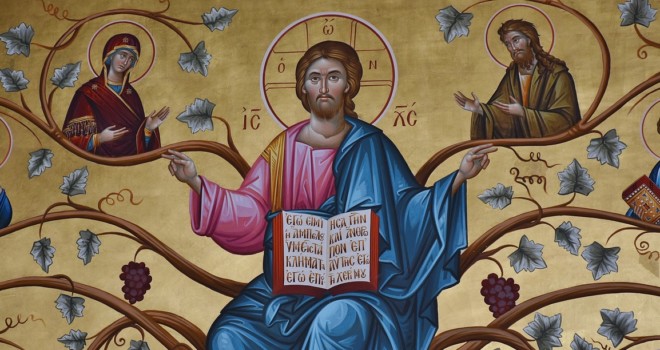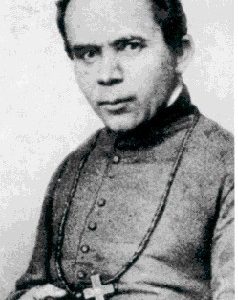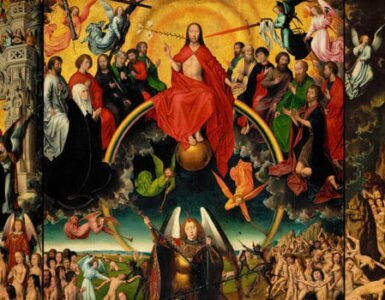There is a close relationship to praising God and reverencing God. Actually, we will perceive how one leads to and supports the other.
What is Reverence?
Off the bat, let us offer a classical definition for Reverence. This definition is taken from Father John Hardon, from his Pocket Catholic Dictionary:
REVERENCE: “The virtue that inclines a person to show honor and respect for persons who possess some dignity. There are four forms of reverence, corresponding to four forms of dignity: 1) familial reverence towards one’s parents or those who take the place of parents; 2) civil reverence towards persons holding civil authority; 3) ecclesiastical reverence toward the Pope, Bishops, priests, and others in the service of the church; 4) religious reverence toward any person, place or object, related to God.” (Etymology: Latin reverential, awe, respect)
But how do we cultivate this reverence for God? Let’s look to the Bible.
Reverence for God As Reflected in Divine Revelation—The Bible
1. Abram/Abraham (Gn 17: 3-8)
It was only after Abram actually prostrated himself before God that God finally spoke to Abram. The gesture of prostration manifested humility, submission, penance, as well as reverence.
In the Rite of Ordination, the candidate prostrates himself on the ground before receiving the Sacrament from the hands of the Bishop. In the Good Friday Liturgy, the priest processes in silence towards the altar dressed in red, the color of the Lord’s Precious Blood, then falls to the ground, prostrating himself before the cross, and lays prostrate on the ground in silence for a period of time. Reverence in the Ignatian sense, means to humble ourselves before our Creator, to be submissive to His holy will, to recognize the Majesty of God as Creator and King, and to recognize our total dependence on Him.
In the words of Saint Catherine of Siena: “Dio tutto; io niente.” (“God is all; I am nothing!”)
2. Moses & the Burning Bush (Exodus 3)
Fascinated at the scene of a bush at the foot of the mountain burning but not being consumed, Moses draws closer and closer only to hear the voice of God issuing from the bush: “Take your sandals off for you are on holy ground.” Obedient to the Word of God speaking through the bush, Moses takes off his sandals and God proceeds to speak to Moses, charging him with the mission to liberate the Israelites from their slavery to the Egyptians.
In our personal prayer we are challenged, like Moses, to take off our sandals before the Face of the Lord; that is, we are to try to shake off the pride and egotism that we inherited from our first parents. If done then, as in the case of Moses, God indeed will speak to us. Later on God will speak to Moses as friends do, face to face, in total trust and intimacy. God wants to speak to you, but a primary and essential condition is that of a deep-rooted reverence for the sacred.
3. The Vocation of Isaiah (Is 6: 6–7)
Before launching out on his mission as preacher, writer, and Old Testament martyr, Isaiah had a vision of a three times Holy God in the temple, surrounded by angelic spirits. Recognizing his unworthiness, Isaiah complained that he was a man of impure lips. God sent an angel with a burning coal to purify his lips. This gesture of purification was necessary for Isaiah’s mandate to preach the Word of God to this sinful people.
What must be highlighted here and emphasized is the reverential attitude that Isaiah manifested when confronted with the holiness of God. Indeed, he was in contact with a thrice Holy God! Pope Benedict XVI commented that in the modern world we have lost the sense of the sacred.
Both Moses and Isaiah encountered God but only in a symbolic representation—the burning bush and the vision in the Temple. We have access and contact with the Real Presence every time we come into the Church and are in front of the Blessed Sacrament! With this acute awareness of the Real Presence of Jesus, truly present in every Tabernacle in every Catholic Church throughout the entire world, should not we exercise the same reverence every time we approach? That necessarily leads to the next point on reverence.
4. Reverence in Church and in Front of the Blessed Sacrament
Building upon the last point of Jesus in the Blessed Sacrament, as well as His Presence in every Holy Sacrifice of the Mass, let us return to Reverence before the Eucharist.
The following are concrete steps that we can take to live out true Reverence before a three times Holy God in the Most Blessed Sacrament of the altar.
- a) SILENCE. Upon entering any Church, an attitude of silence, silent respect should permeate our whole being. Remember, you are in the presence of the King of Kings, the Lord of Lords, the God of the universe!
- b) MODESTY. Our attire should be that of great modesty in front of our Lord and God. If we were to have a personal audience with a King, Queen, or President, our attire would be modest and dignified. Remember that this is God present to you in the Tabernacle!
- c) GENUFLECTION. Once again, remember that the way we pay tribute to the Eucharistic Lord in the Tabernacle is by the genuflection. In earlier times this was a gesture done before royalty; now, it is done before Jesus, our King and our Lord.
- d) KNEELING. If you do not have serious health problems, it is most appropriate to kneel down in reverence and in silent adoration before the Eucharistic Lord.
- e) PRAY: TALK TO THE LORD. An essential part of both adoration and reverence is that of humble, confident, and trusting prayer. Pour out your heart to your Lord, God, and King and He will listen to you and respond to the suppliant prayers that issue from your heart.
- f) SIGN OF THE CROSS. This might be plain, obvious, or even common sense, however, part of reverence is that of making the Sign of the cross properly and with meaning. By saying: “In the name of the Father, and of the Son, and of the Holy Spirit”… and crossing yourself, you are reverentially expressing two important truths. First, the sublime Mystery of the Blessed Trinity—the belief in One God and three separate Persons: the Father, the Son, and the Holy Spirit. Also, included is the belief that we were saved by the Cross—the Passion, death, and Resurrection of Jesus Christ.
- g) SILENT REVERENCE AND LOVE. Reverence can also be expressed by silently gazing with love at the Blessed Sacrament, and then looking up and contemplating Jesus on the cross loving and thanking the Lord from the depths of your heart.
5. The Magi Visiting the Child Jesus With Profound Reverence (Mt 2: 1-12)
After a long, weary journey and having left the palace of King Herod, the Magi followed the star that stopped over the place where the Child Jesus could be found in the arms of Mary His Mother. They descended from their camels, and prostrated themselves before the Infant King in front of them. This is true reverence at its height.
What followed from this act of reverence on the part of the Kings was the generosity of giving. The Kings opened their coffers and offered the Child Jesus precious gifts of Gold, Frankincense, and Myrrh—for Jesus as King, Jesus as God, and Jesus who in His humanity would suffer and die for us. Therefore, take as models of reverence the Magi, especially their prostration before Someone whom they recognized as an even greater King.
6. The Reverence and Respect That Jesus Has for Us (Jn 13: 1–17)
At the Last Supper, the humility, love, respect, and even reverence of Jesus is manifested to the Apostles when Jesus washes their feet. How much Jesus loved the Apostles and how much He continues loving us—the great reverence of Jesus in the Washing of the Feet. Meditate upon this and derive its fruit!
7. The Children of Fatima & the Appearance of the Angel of Fatima
In 1916, the Angel of Fatima taught the children how to pray and about the different sentiments of deep prayer: adoration, supplication, contrition, reparation, but also that of profound reverence. With respect to Reverence, the Angel taught the children the importance of the gesture and the posture of prostration.
The Angel prostrated himself, and the three children did the same. After the apparitions of the Angel, the children would sometimes spend long periods of time in prayer, in reverence, in communion with God.
May we learn from the Angel and the children what it means to have reverence for God!












